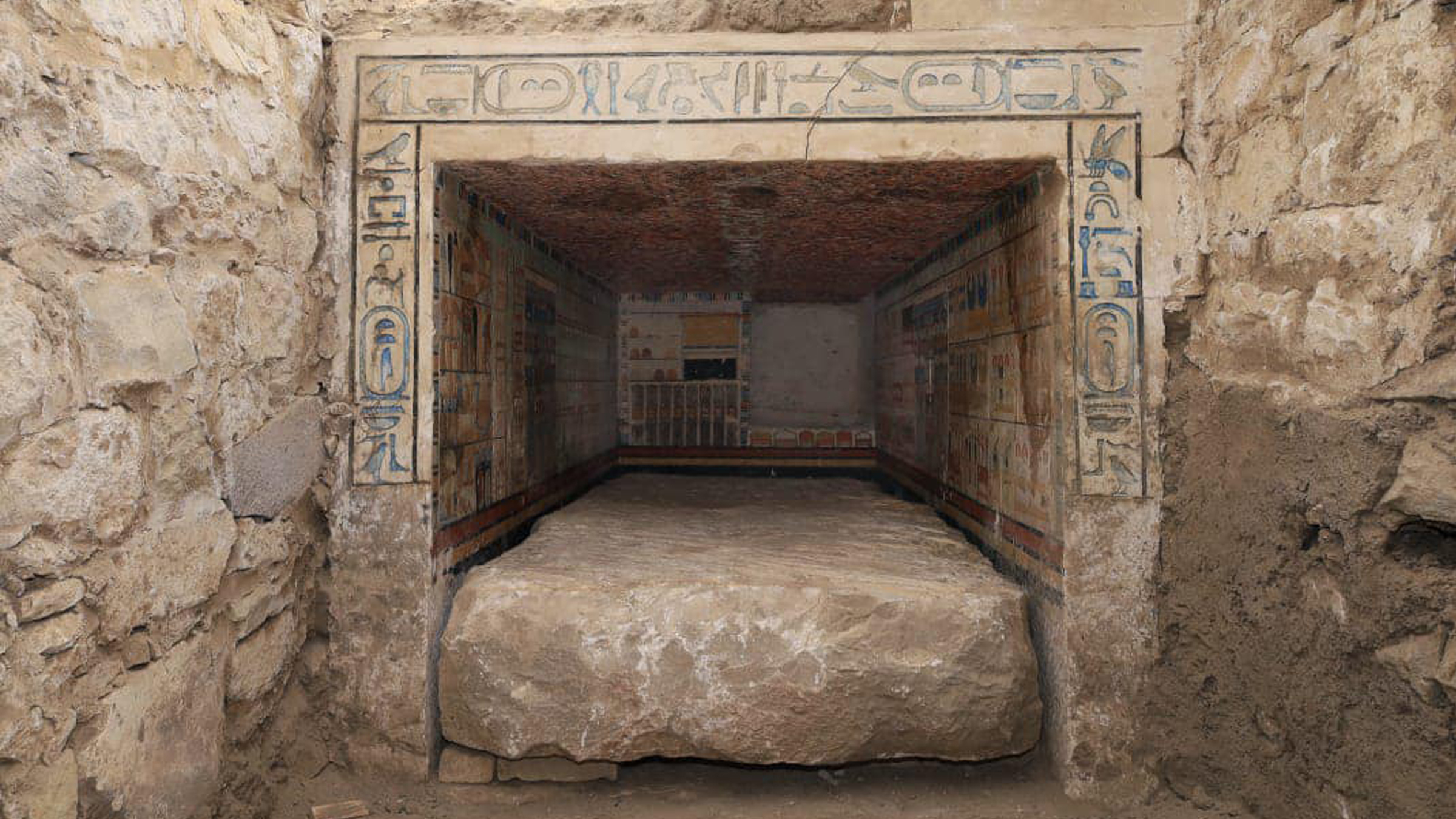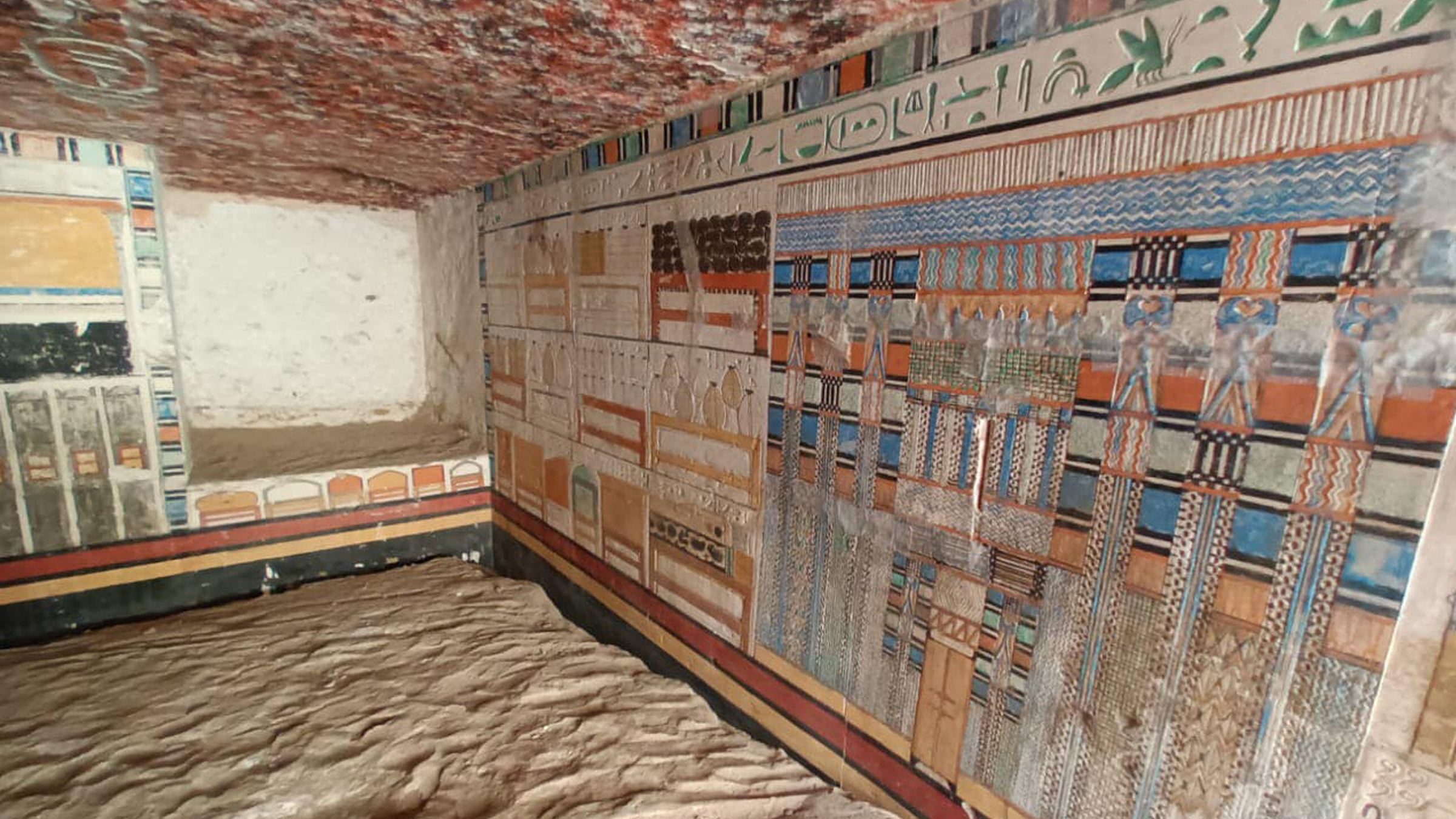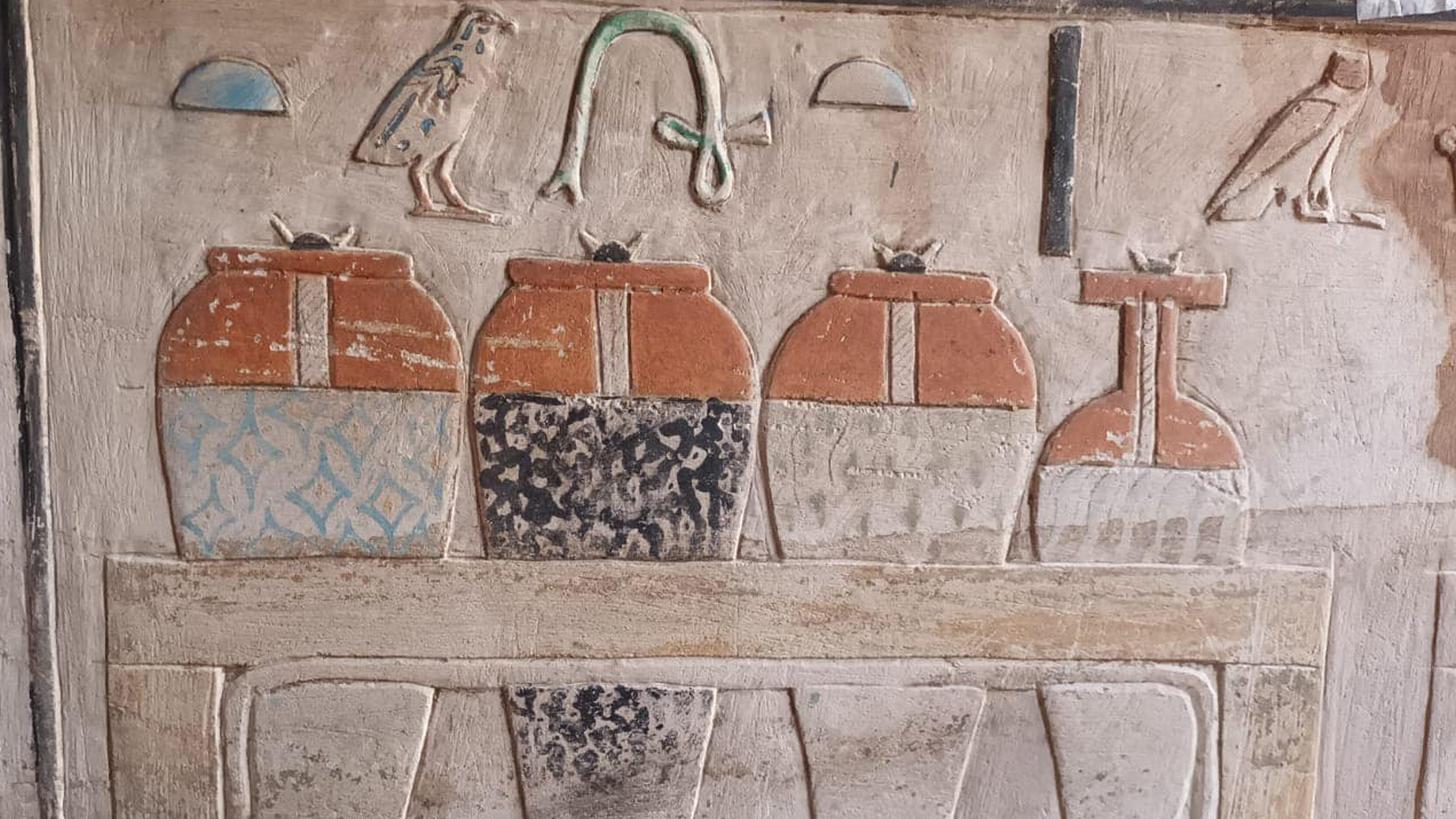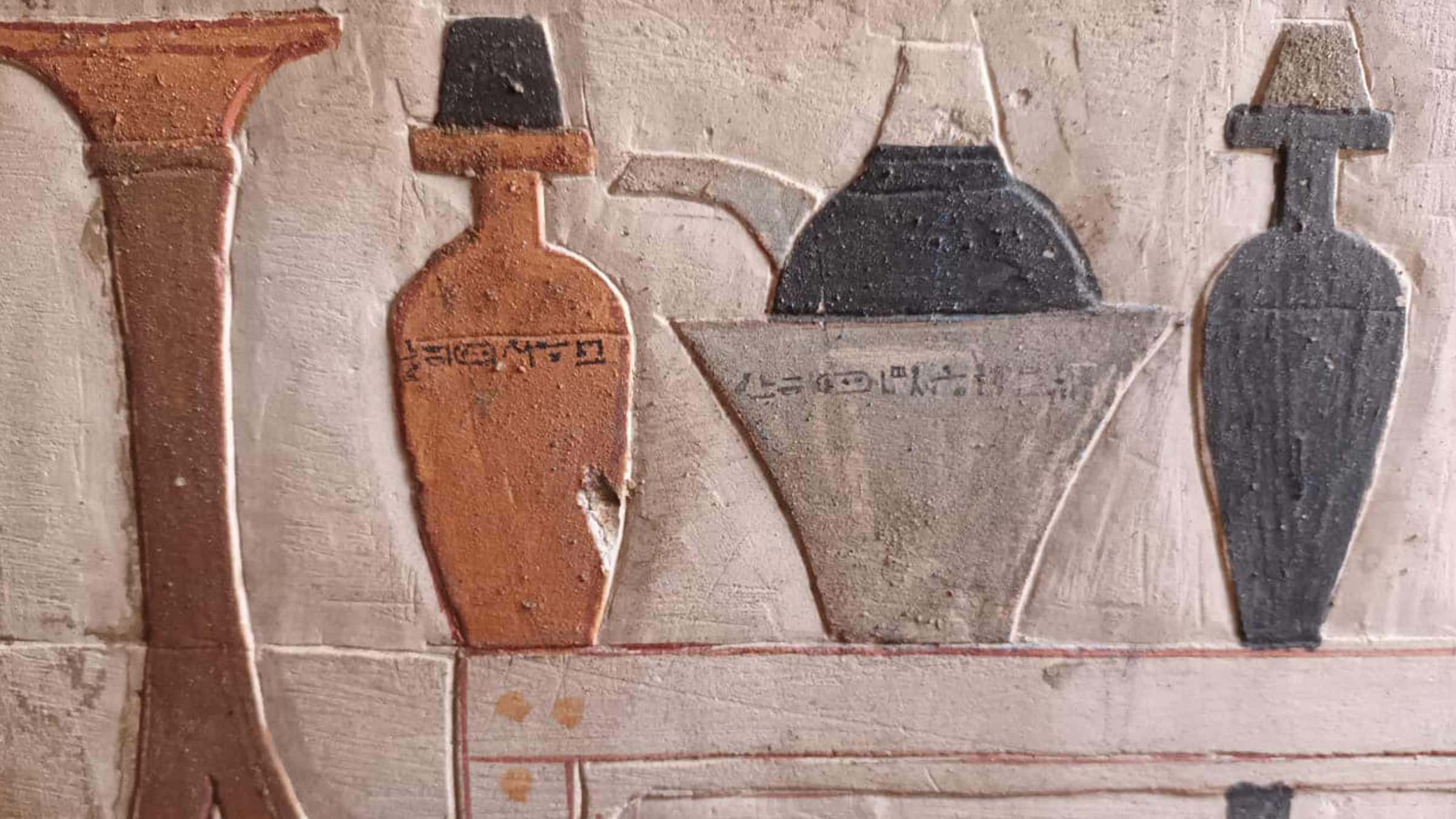
The 4,100-year-old tomb of a doctor who "treated the pharaoh himself" has been discovered at the site of Saqqara in Egypt.
The burial belongs to a doctor named "Tetinebefou," the Swiss-French team that made the discovery reported in a translated blog post. Although the artifacts in the tomb had been plundered, archaeologists were able to study the site's wall paintings and hieroglyphic inscriptions, which describe the doctor's position and depict a variety of objects that may have been used in his medical treatments..
He held the title of "conjurer of the goddess Serqet [also spelled Serket and Selket]," a goddess who was associated with scorpions and was thought to provide protection from their stings. This title meant that "he was a specialist in poisonous bites," Philippe Collombert, leader of the Swiss-French team and an Egyptologist at the University of Geneva, told Live Science in an email.
The inscriptions also say the doctor was "director of medicinal plants," a title that has been seen on only one other discovery from ancient Egypt, Collombert said. In addition to these titles, the inscriptions note that he was the "chief dentist," another title that is rarely seen.
"Evidence for ancient Egyptian 'dentists' is exceedingly scarce," Roger Forshaw, an honorary lecturer at the KNH Centre for Biomedical Egyptology at the University of Manchester who was not involved with the research, told Live Science in an email.
These titles suggest that Tetinebefou was at the top of his profession. "He was certainly the main physician at the royal court, so he would have treated the pharaoh himself," Collombert said. Tetinebefou's tomb is decorated with colorful wall paintings that depict a variety of containers, such as jars and what looks like a vase. They also show colorful abstract images and geometric shapes.
Related: Why are so many ancient Egyptians buried at the Saqqara necropolis?



The walls are "entirely decorated with paintings in bright, fresh colors! It's easy to forget that they are 4,000 years old!" the team wrote in the blog post.
It's unclear exactly which pharaohs Tetinebefou served. They may have included Pepi II (who reigned circa 2246 to 2152 B.C.) or one or more pharaohs who ruled a bit later, Collombert said.
While Egypt was united and still building pyramids during the reign of Pepi II, it started to fragment after his rule, with nomarchs (governors) gaining more power. This ushered in a period that Egyptologists call the First Intermediate Period, which lasted from roughly 2150 to 2030 B.C.
No human remains were found in the tomb. Aside from the paintings and inscriptions on the walls, "it had been ransacked almost completely," Collombert said.
Analysis of the tomb is ongoing.







